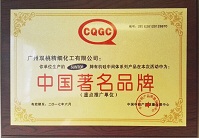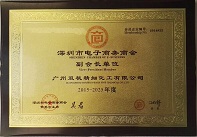
![]() E-mail: admin@gz-chemical.com
E-mail: admin@gz-chemical.com
Email us,best price and silane solutions for you!
Tel:+86 (20) 29035969

![]() E-mail: admin@gz-chemical.com
E-mail: admin@gz-chemical.com
Email us,best price and silane solutions for you!
Tel:+86 (20) 29035969


The startup in February this year of US LNG exports based on cheap American shale gas
had been expected to see a good proportion of cargoes heading across the Atlantic
to Europe given the relatively short shipping route and Europe's massively underus
ed LNG import capacity.
But with European gas prices staying stubbornly low for most of the year and the margins
for US LNG having been largely eroded due to the slump in global LNG prices, in the end
only a handful of cargoes ended up in Europe.
As 2016 nears its end, more than 50 cargoes have left the Cheniere Energy-operated Sa
bine Pass terminal in the Gulf of Mexico for international markets.
But of those cargoes, just three landed in mainland Europe -- one in Portugal, one in Sp
ain and one in Italy -- while another two shipments were made to Turkey.
According to industry sources, the two to the Iberian Peninsula were considered to be "te
st" cargoes given that they were not followed up by any new cargoes, while the shipment
to Italy was seemingly a one-off as it was procured by Uniper to meet its obligations un
der the country's "peak-shaving" tender program.
Italy's economy ministry holds tenders several times a year for companies to provide
gas that can be used during periods of unexpected peak demand.
Uniper won Italy's latest peak-shaving tender held in October and opted to supply 105,00
0 cum of LNG (63 million cum of gas) from Sabine Pass to be stored "until needed" at
the Toscana FSRU off the coast of Livorno. NORTHWEST EUROPE
So the evidence so far suggests that southern Europe has been able to attract some U
S LNG -- though in limited volume -- but the appeal of US LNG in northwest Europe has ye
t to emerge where competition from pipeline suppliers Norway and Russia is fierce.
Gazprom has repeatedly dismissed the economic viability of US LNG in Europe given th
e current low European gas prices and its own low production costs.
Buyers in northwest Europe have reportedly told Cheniere that they do not have any nee
d for now for US LNG given the abundance of pipeline gas.
The response to US LNG exports starting up from Europe's traditional pipeline suppliers
has been clear -- Russia, Norway and Algeria are all supplying consistently high volumes
to Europe.
Russian exports to Europe and Turkey (minus the countries of the former Soviet Union)
are set to hit an all-time high of 180 Bcm this year, while Norway's supplies to Europe will
come in at around the record of 115 Bcm set in 2015.
Norway has been targeting its sales on the Netherlands and UK, and is not trying so much
to compete with Russia in Germany. Norway's sales to the Netherlands and UK are way up
in 2016 compared with the previous year, but slightly down to Germany. ASIA OPENING U
P
The majority of cargoes of US LNG shipped in 2016 went to American neighbors in Chile,
Mexico and Brazil. This was not a surprise -- Cheniere itself conceded that it made sense
for the LNG to remain closer to home given the narrow margins.
Things have evolved again though since the Sabine Pass plant reopened in late October
after a month of maintenance, as Asian LNG prices jumped sharply on a surprise lack of
supply amid higher demand and several trips at liquefaction plants including Gorgon in
Australia.
As a result, a number of cargoes are now headed for Asia to make the most of the higher
spot prices.
Two shipments have been delivered to China so far, while a first cargo is due to land in
South Korea at the weekend.
Eight other US LNG cargoes from Sabine Pass are currently headed for Asia having trave
rsed the Panama Canal in mid-December.
Platts assessed the JKM LNG Asian benchmark price at $9.20/MMBtu on Thursday.
That is a considerable jump from prices as low as $4/MMBtu in the summer of 2016.
Guangzhou Double Peach Fine Chemical Co.,Ltd
Address: No 3401 Huangpu East Road, Huangpu District, Guangzhou, China
Tel:+86 (20) 29035969 Fax:+86(20)29035979
Tel/Wechat/Whatsapp:0086 13826126978 admin@gz-chemical.com